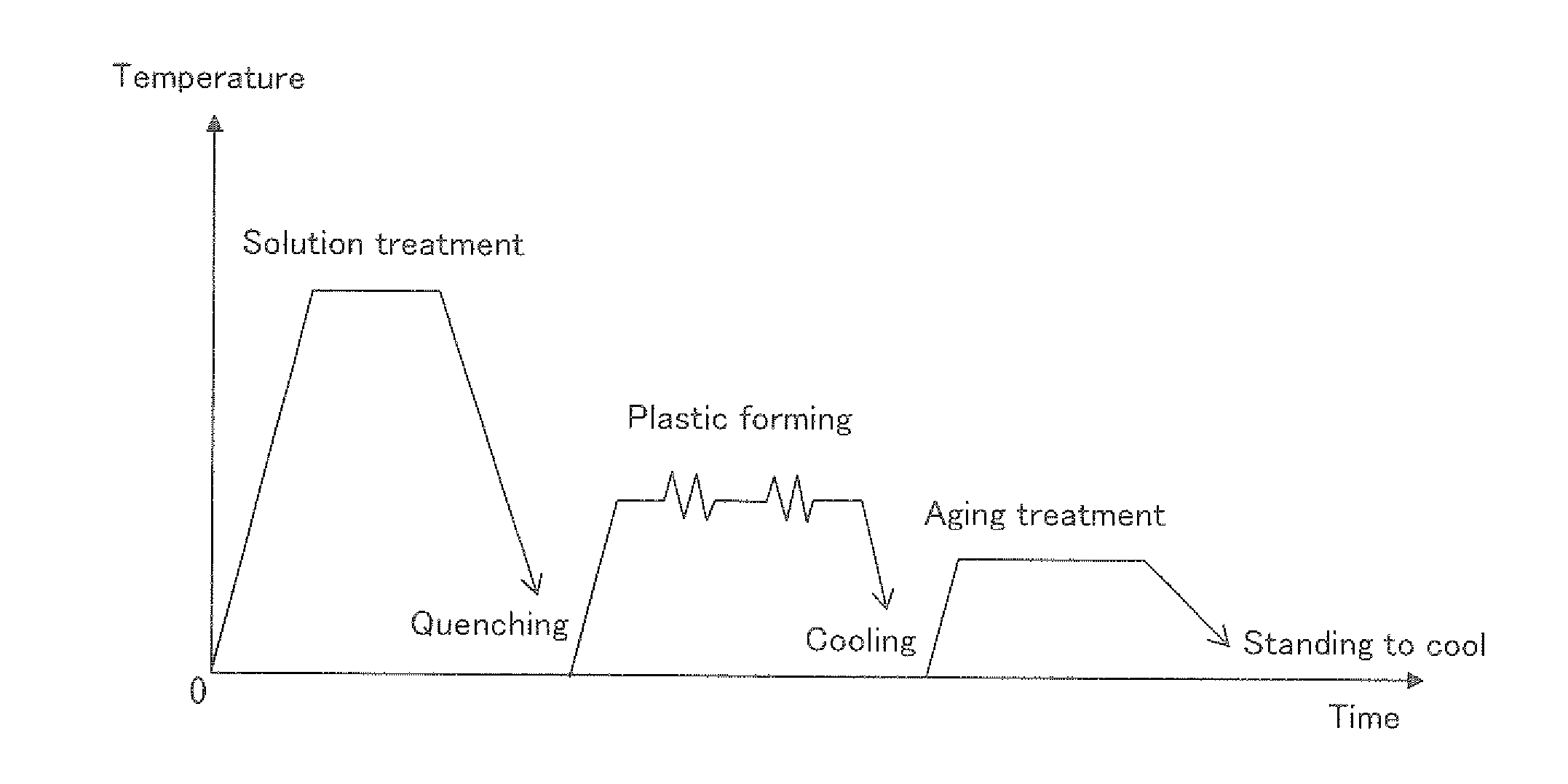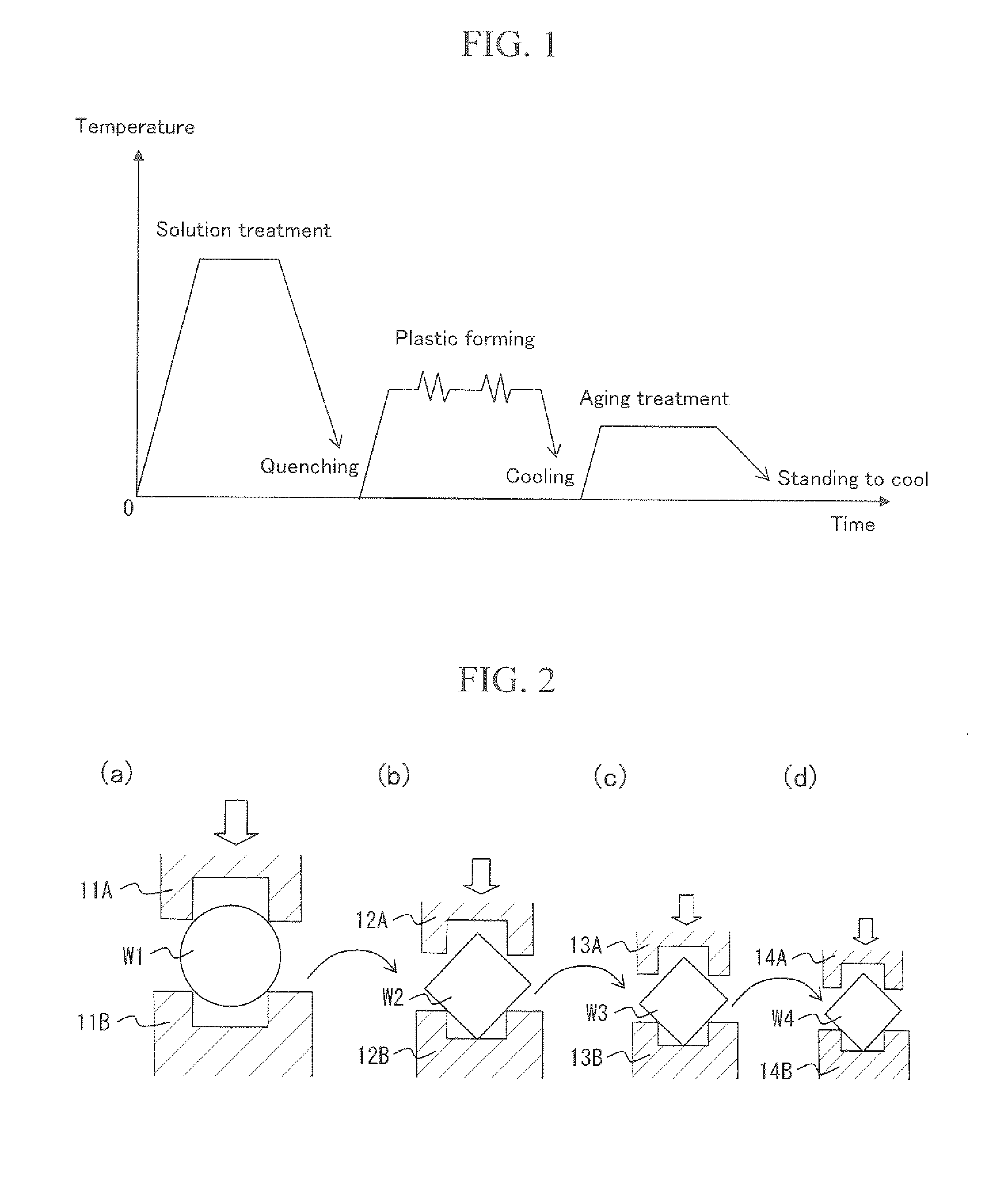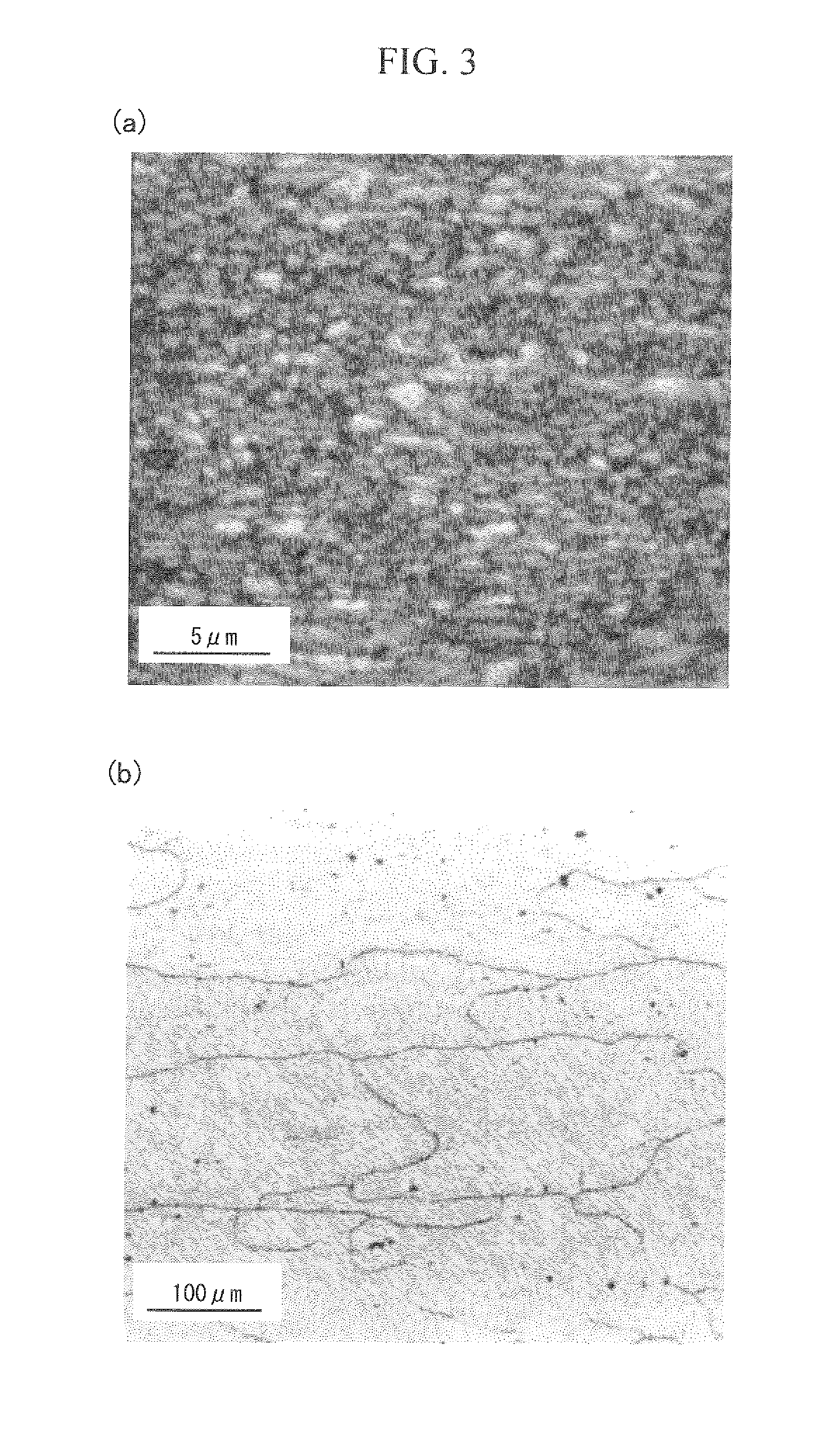Process for producing aluminum alloy material and heat treated aluminum alloy material
a technology of heat treatment and aluminum alloy, which is applied in the field of process for producing aluminum alloy materials, can solve the problems of significant reduction in aluminum alloy material strength, non-uniform strain distribution of aluminum alloy materials, and crystal grains becoming partially coarse in a portion, and achieve the effect of reducing aluminum alloy material strength
- Summary
- Abstract
- Description
- Claims
- Application Information
AI Technical Summary
Benefits of technology
Problems solved by technology
Method used
Image
Examples
example 1
Production Process
[0030]A heat treatable aluminum alloy material (JIS: A6061) made up of a continuously cast round bar (diameter: 50 mm; length: 150 mm) comprising components listed in table 1 was prepared as a starting material. Next, the aluminum alloy material was subjected to solution treatment by the steps shown in FIG. 1 and table 2. At the beginning, the aluminum alloy material was heated and maintained at 540° C. such that precipitation strengthening elements in the aluminum alloy material were formed into a solid solution. Then, the aluminum alloy material comprising the solid solution was immersed in water at 75° C. for quenching.
TABLE 1ComponentSiFeCuMnMeCrZnTiAl% by weight0.650.160.240.091.20.120.100.02Remnant
[0031]Next, the aluminum alloy material was heated to a temperature of 150° C., which was much lower than the recrystallization temperature, in order to achieve temperature conditions that do not cause softening of an aluminum alloy material subjected to solution tr...
examples 2 to 5
Example 2
[0035]An aluminum alloy material was produced as in Example 1. Example 2 differs from Example 1 in that air cooling was carried out after forging at a cooling rate of 5° C. / second as shown in tables 2 and 3.
example 3
[0036]An aluminum alloy material was produced as in Example 1. Example 3 differs from Example 1 in that the heating temperature upon forging was 250° C. as shown in tables 2 and 3.
PUM
| Property | Measurement | Unit |
|---|---|---|
| temperature | aaaaa | aaaaa |
| grain size | aaaaa | aaaaa |
| average crystal grain size | aaaaa | aaaaa |
Abstract
Description
Claims
Application Information
 Login to View More
Login to View More - R&D
- Intellectual Property
- Life Sciences
- Materials
- Tech Scout
- Unparalleled Data Quality
- Higher Quality Content
- 60% Fewer Hallucinations
Browse by: Latest US Patents, China's latest patents, Technical Efficacy Thesaurus, Application Domain, Technology Topic, Popular Technical Reports.
© 2025 PatSnap. All rights reserved.Legal|Privacy policy|Modern Slavery Act Transparency Statement|Sitemap|About US| Contact US: help@patsnap.com



